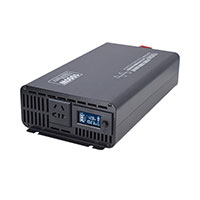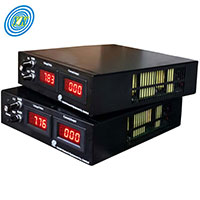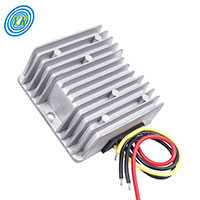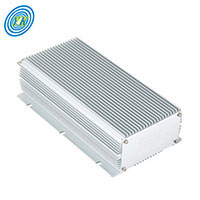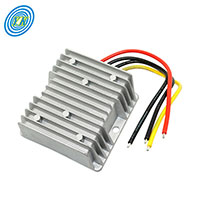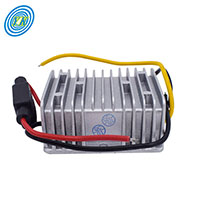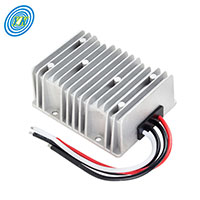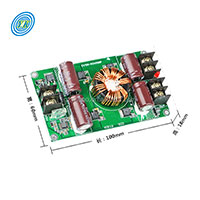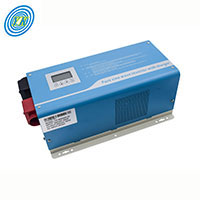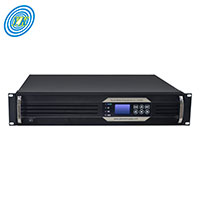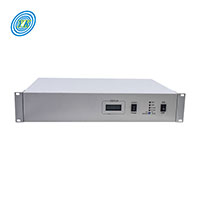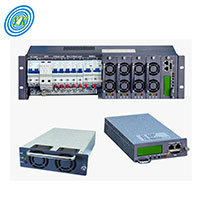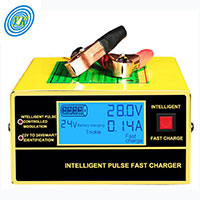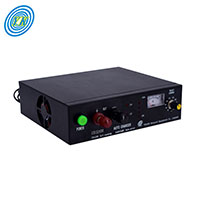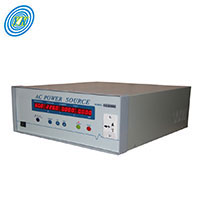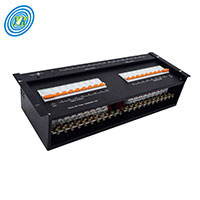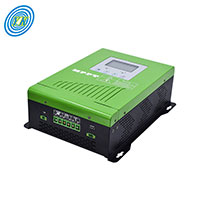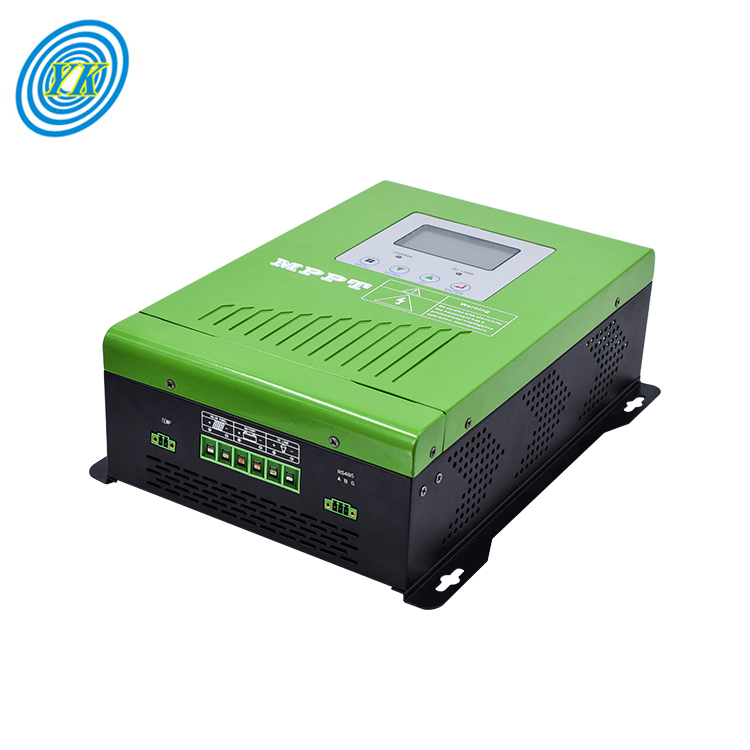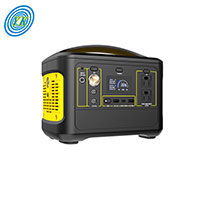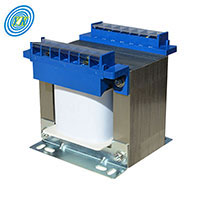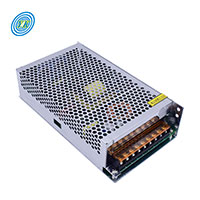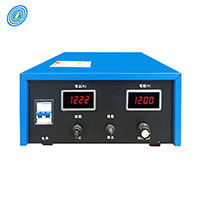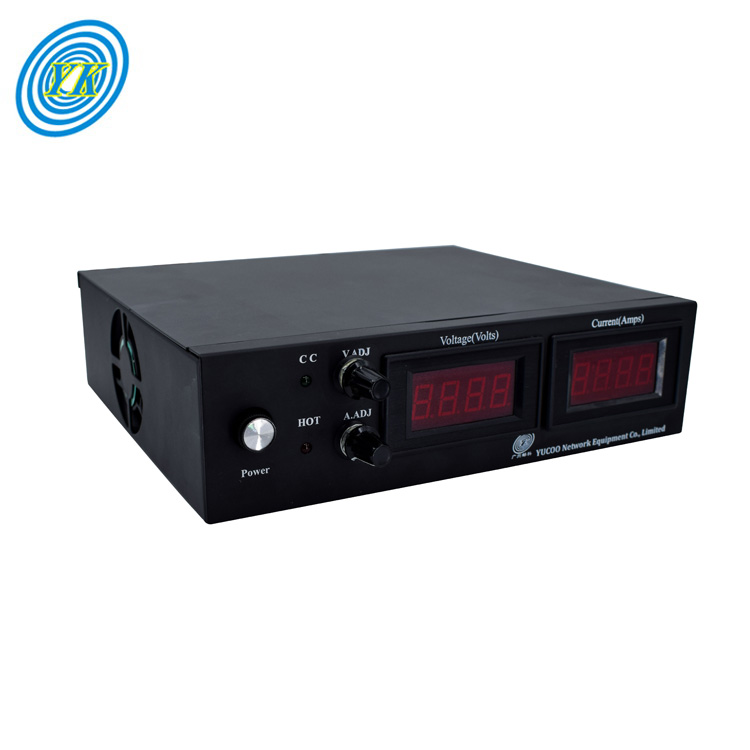
Powering the Future: Variable Power Supplies in Smart Grid Technology
Click: 926 Date: 09/15/2023 2::06::40 PM
Powering the Future: Variable Power Supplies in Smart Grid TechnologyThe advent of smart grid technology is revolutionizing the power industry, providing efficient and sustainable management of energy resources. At the heart of this transformation are variable power supplies. They offer the flexibility and control needed to optimize energy distribution and consumption, paving the way for a greener and more resilient power infrastructure.The Role of Variable Power Supplies in Smart GridsVariable power supplies are essential to the functioning of smart grids. They enable dynamic adjustment of voltage and current levels, facilitating efficient power management and distribution. This is particularly important for handling renewable energy sources like solar and wind power, which can be intermittent and variable.For instance, a smart grid can use variable power supplies to manage the power generated from solar panels. When solar irradiance is high, the power supply can increase the voltage to maximize energy capture. Conversely, when solar irradiance is low, the power supply can reduce the voltage to prevent energy wastage.Benefits of Using Variable Power Supplies in Smart GridsVariable power supplies bring several advantages to smart grids:Efficiency: They help optimize power usage by adjusting voltage and current levels based on demand and supply conditions. This can lead to significant energy savings and reduce the grid's environmental impact.Flexibility: Variable power supplies allow smart grids to adapt to varying energy inputs, especially from renewable sources. This flexibility is crucial for integrating renewables into the grid and moving towards a sustainable energy future.Resilience: By enabling dynamic control over power distribution, variable power supplies can help maintain grid stability and prevent blackouts during peak demand periods or power surges.Challenges and SolutionsDespite their benefits, the integration of variable power supplies into smart grids also presents challenges. One of the main issues is the potential for power quality problems, such as voltage fluctuations and harmonic distortions, especially when dealing with renewable energy sources.To mitigate these issues, advanced control methods and power quality compensators are being developed. These technologies can help maintain the balance of the distributed generation network and grid side network, ensuring the smooth operation of the grid.Furthermore, the advancement of communication protocols and the application of artificial intelligence in data analysis and control of smart grids are also contributing to the effective management of variable power supplies.ConclusionVariable power supplies are indispensable tools in the development and operation of smart grids. They provide the necessary adaptability to cope with the fluctuating nature of renewable energy sources and the varying demand patterns of modern power consumers. While challenges remain, ongoing technological advancements are paving the way for more efficient and resilient power grids. The future of power management, indeed, lies in the smart application of variable power supplies.
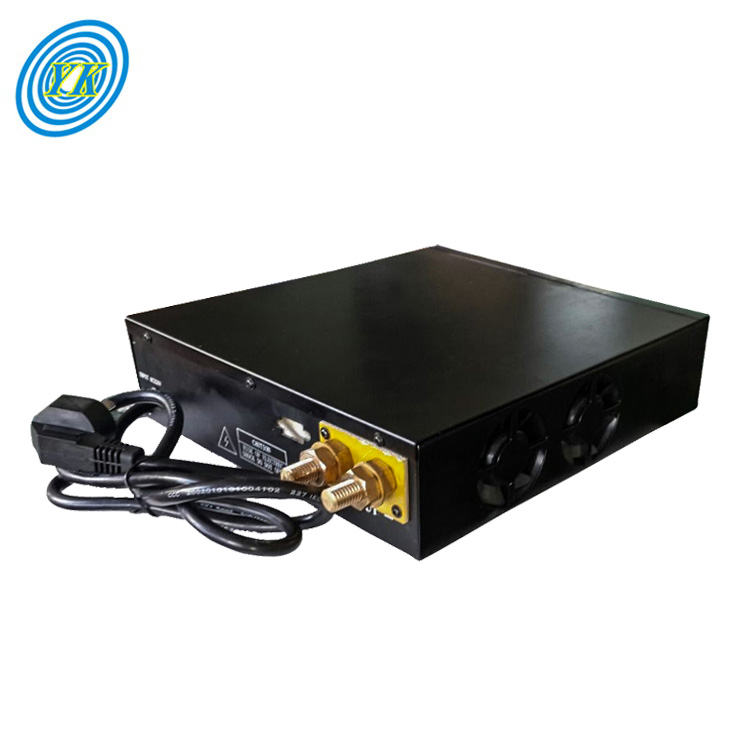
From Lab to Life: How Variable Power Supplies are Advancing Biomedical Research
Click: 925 Date: 09/15/2023 10::14::51 AM
From Lab to Life: How Variable Power Supplies are Advancing Biomedical ResearchThe world of biomedical research has been revolutionized by the advent of variable power supplies. These advanced tools are enhancing the precision and control of various lab equipment, leading to more accurate and efficient research processes. This article will delve into how variable power supplies are propelling advancements in the field of biomedical research.Variable power supplies play a crucial role in the operation of bioelectrical and biomedical devices. These devices often require specific power levels to function optimally. With variable power supplies, researchers can precisely adjust the power delivered to the devices, ensuring their smooth operation and accurate results.In the field of bioelectrical signal processing, variable power supplies are instrumental. They help in the analysis of biological signals, which are vital in understanding physiological activity at the cellular and organ levels. For instance, in the processing of electrocardiogram (ECG) signals, variable power supplies enable the use of adaptive noise cancellation and machine learning-based algorithms, leading to more accurate detection and interpretation of ECG data.Variable power supplies also facilitate advancements in medical imaging. They allow for the precise control of imaging devices, resulting in higher quality images that can aid in disease diagnosis and treatment planning. For example, in Magnetic Resonance Imaging (MRI), variable power supplies are used to control the magnetic field, which is crucial in generating detailed images of the body's internal structures.In addition to the above, variable power supplies are also making their mark in the field of therapeutic applications. They enable the delivery of precise levels of electrical or magnetic stimulation, which is being explored as a potential treatment method for various health conditions. For instance, in the domain of acoustic mechanobiology, variable power supplies allow for the precise control of acoustic waves, which have been shown to stimulate cellular responses and promote healing.Finally, the role of variable power supplies in aiding the development of new technologies cannot be overstated. By enabling precise control of power levels, they are facilitating the creation of innovative biomedical devices and systems. This is particularly evident in the field of bioengineering, where variable power supplies are being used to develop sophisticated biofabrication protocols for tissue engineering and organoid manufacturing.In conclusion, variable power supplies are proving to be an invaluable tool in biomedical research. By providing precise control of power levels, they are enhancing the efficiency and accuracy of various biomedical devices and processes, leading to significant advancements in the field. As the technology continues to evolve, it's expected that the influence of variable power supplies on biomedical research will only continue to grow.
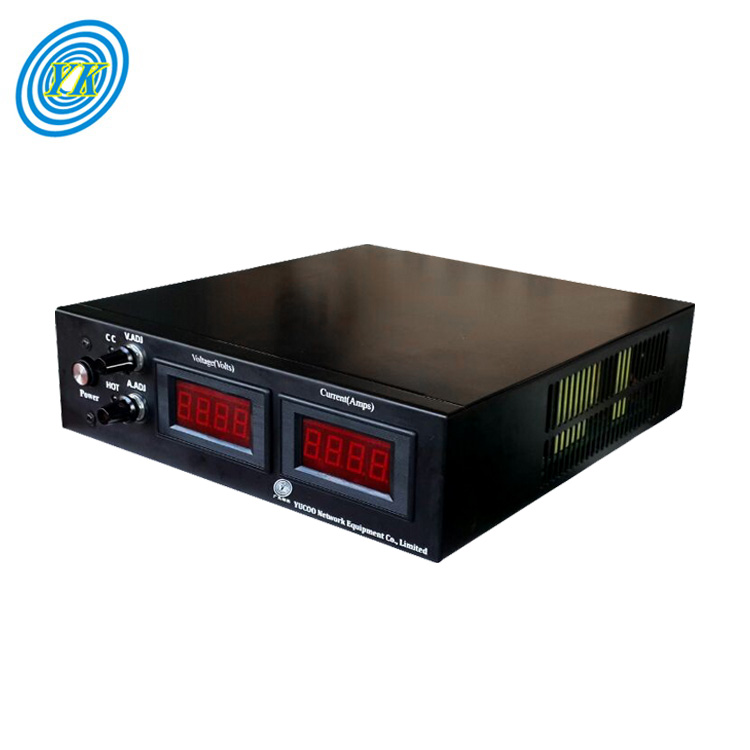
Unleashing the Potential: Variable Power Supplies for Efficient Electric Vehicle Charging
Click: 863 Date: 09/15/2023 10::02::59 AM
Unleashing the Potential: Variable Power Supplies for Efficient Electric Vehicle ChargingThe transition towards electric vehicles (EVs) is a significant step in reducing carbon emissions and improving energy efficiency. A critical aspect of this transition is the development of efficient and flexible charging systems. Variable power supplies can play a pivotal role in this context, enabling more efficient and adaptable charging solutions.The Need for Variable Power Supplies in EV ChargingTraditional charging systems often operate at a fixed power level, which may not always align with the power availability from the grid or the charging needs of the vehicle. In contrast, variable power supplies can adjust the charging power based on various factors such as grid conditions, battery status, and user preferences. This flexibility can lead to more efficient use of energy resources, better battery health management, and improved user experience.Advancements in Variable Power Supplies for EV ChargingSeveral researches and real-world applications have explored different strategies for variable power EV charging, such as "Uncoordinated vs Coordinated charging", "Coordinated control strategy of energy storage system with electric vehicle charging station", and "Fuzzy logic control for an electric vehicles fast charging station".Another critical development is the integration of variable power supplies with smart grid technologies. For instance, flexible EV charging has been studied for its role in integrating variable renewable energy sources into the grid.A research paper titled "Flexible Smart EV Charging" discussed different smart EV charging strategies based on charging behavior, such as instant strategy, allotted-slot strategy, and deferred strategy. These strategies utilize variable power supplies to optimize charging processes based on various factors, including time-of-use tariffs, user schedules, and grid conditions.The Future of Variable Power Supplies in EV ChargingThe advancements in variable power supplies for EV charging are just the beginning. With the continuous development of EV and charging technologies, we can expect more innovative applications of variable power supplies. For instance, wide bandgap silicon carbide (SiC) devices are expected to replace silicon switching devices, allowing a significant reduction in the charger's weight and volume.In conclusion, variable power supplies hold great potential for enhancing the efficiency and flexibility of EV charging. By continuing to explore and develop these technologies, we can support the widespread adoption of EVs and contribute to a more sustainable energy future.
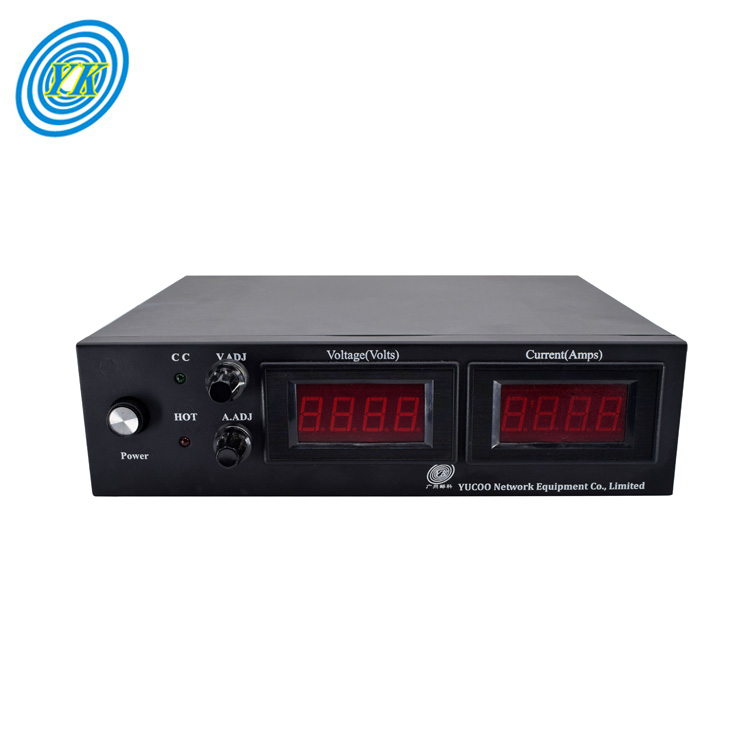
Revolutionizing Power Management: Exploring Variable Power Supplies in Renewable Energy Systems
Click: 717 Date: 09/15/2023 09::34::15 AM
Revolutionizing Power Management: Exploring Variable Power Supplies in Renewable Energy SystemsThe world today is witnessing a paradigm shift from fossil fuels to renewable energy sources. Variable power supplies, an integral part of this transition, are revolutionizing the way we manage power in renewable energy systems. By enabling flexibility and efficiency, these power supplies are significantly contributing to the growth of renewable energy technologies such as wind, solar, and hydropower.Renewable Energy and Variable Power SuppliesRenewable energy sources, by nature, are intermittent and variable. For instance, solar panels generate power only during daylight hours, and wind turbines are dependent on wind conditions. To overcome these challenges, variable power supplies are used. These power supplies can adjust the output voltage and current according to the power demand and the available renewable energy, optimizing energy usage and reducing waste.Variable Power Supplies in Wind Energy SystemsIn wind energy systems, variable power supplies play a pivotal role. They allow the wind turbines to operate at their maximum efficiency, irrespective of the wind speed. When the wind speed is variable, the power supply can adjust the output voltage to ensure the turbine's optimal performance. This not only increases the overall efficiency but also extends the lifespan of the turbine.Variable Power Supplies in Solar Energy SystemsIn solar energy systems, variable power supplies are used to match the output voltage with the load requirements. Solar panels produce DC power, which needs to be converted into AC power for most applications. Variable power supplies, along with inverters, perform this conversion and adjust the output voltage according to the load demand.Variable Power Supplies in Hybrid Renewable Energy SystemsVariable power supplies are also crucial in hybrid renewable energy systems, which combine multiple renewable energy sources. In such systems, the power supply needs to manage the power from different sources and provide a stable output. For instance, in an integrated PV/Wind/Battery/Fuel Cell system, the power management system uses an intelligent algorithm to ensure continuity of power supply to the load while controlling the operations of the renewable energy sources and energy storage systems. The power management system prioritizes renewable energy to supply the load, and the excess energy is stored in batteries or converted into hydrogen fuel.ConclusionVariable power supplies are playing a pivotal role in the growth of renewable energy technologies by ensuring optimal power management. As we continue to explore and develop renewable energy sources, the importance of these power supplies will only grow. By providing flexibility and efficiency, variable power supplies are truly revolutionizing power management in renewable energy systems.
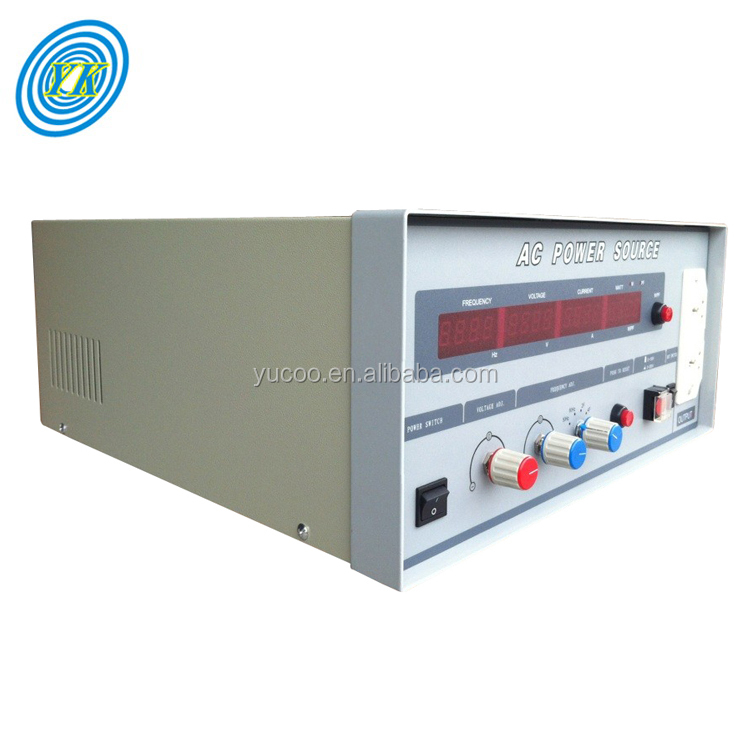
Empowering Electronics: Variable Power Supplies in Circuit Design and Testing
Click: 878 Date: 09/14/2023 4::06::36 PM
Empowering Electronics: Variable Power Supplies in Circuit Design and TestingPower supplies play a crucial role in the design and testing of electronic circuits. A variable regulated power supply offers flexibility and control over the voltage and current output, making it an essential tool for circuit designers. This article explores the benefits and applications of variable power supplies in circuit design and testing, highlighting their role in enabling efficient and reliable electronic systems.Understanding the Fundamentals of Power Supply Design:A solid understanding of power supply design fundamentals is essential for reliable and stable circuit operation.Key components of a power supply include transformers, bridge rectifiers, and capacitors.Isolated power supplies utilize transformers to step down AC voltage, while bridge rectifiers convert AC voltage to DC voltage.Importance of Variable Regulated Power Supplies:Variable power supplies provide the flexibility to adjust the voltage and current output according to the specific requirements of the circuit being designed or tested.They enable the simulation of different voltage levels to assess the performance and behavior of circuits under various operating conditions.Variable power supplies are particularly useful when working with circuits that require different voltage specifications, such as TTL devices (5V) or CMOS circuits (3.3V).Designing a Variable Regulated Power Supply:Designing a variable regulated power supply involves considering the desired voltage range and current output.The aim is to design a power supply that can provide a variable voltage output within a specified range, such as 1V to 25V at 1A.The design process involves selecting appropriate components and ensuring proper regulation and stability of the output voltage.Circuit Design and Optimization:Circuit design plays a critical role in ensuring the efficiency and performance of a variable power supply.Using circuit design tools like LTpowerCAD can simplify the design process and optimize the external components .LTpowerCAD offers calculations for component selection, efficiency optimization, and control loop stability.Testing and Evaluation:While circuit design tools are valuable, thorough hardware evaluation is necessary to assess the performance of the power supply.High-speed switching in switching regulators can introduce noise and affect the load circuit, requiring proper filtering and evaluation.Hardware testing helps identify and mitigate issues related to parasitic effects, thermal management, transient protection, and overall performance.Conclusion: Variable power supplies are indispensable tools in circuit design and testing, offering flexibility, control, and versatility. By providing adjustable voltage and current outputs, they empower electronics designers to simulate different operating conditions and ensure the reliability and performance of their circuits. Understanding the fundamentals of power supply design, utilizing circuit design tools, and conducting thorough hardware evaluation are key steps in harnessing the potential of variable power supplies in circuit design and testing.
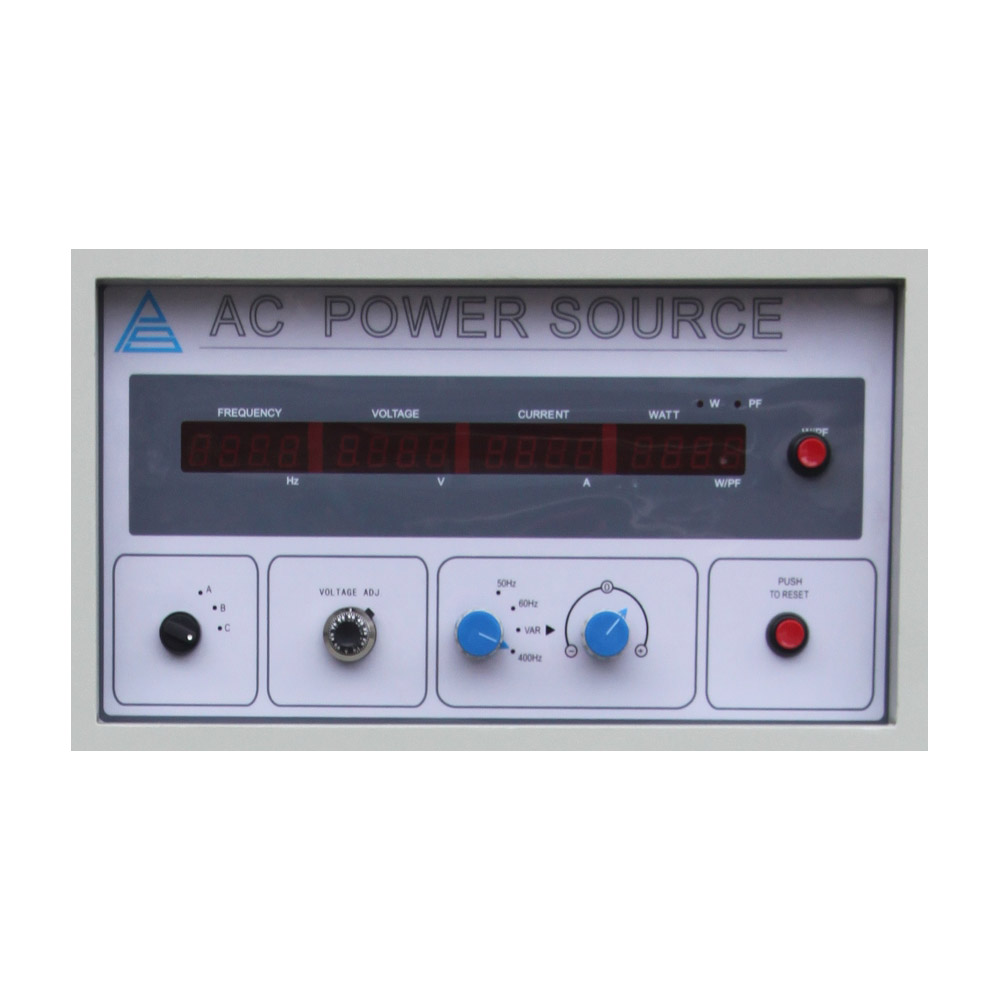
Understanding the Impact of Frequency Inverters on Power Quality
Click: 868 Date: 09/14/2023 3::47::41 PM
Understanding the Impact of Frequency Inverters on Power QualityPower quality is a critical factor in ensuring the reliability and stability of electrical systems. Frequency inverters, also known as variable frequency drives (VFDs), play a significant role in controlling the speed and torque of electric motors. However, their operation can have an impact on power quality. This article aims to provide an understanding of the impact of frequency inverters on power quality, including the causes of power quality issues and potential mitigation strategies.Power Quality ConcernsPower quality refers to the characteristics of the electrical supply, such as voltage and frequency, under typical operational conditions. Power electronics devices, including frequency inverters, can introduce disturbances that affect the quality of the power supplied to connected equipment. Some key concerns regarding power quality include:Non-linear loads and single-phase loads can negatively impact power quality.The increase in sensitive (critical) loads and new operational procedures can affect power quality.The high penetration of distributed energy resources (DERs), such as solar PV systems connected to the grid using inverters, introduces new challenges to power quality.Impact of Frequency Inverters on Power QualityFrequency inverters can introduce harmonic voltages and currents, leading to power quality issues at the point of connection (POC). Harmonics are multiples of the fundamental frequency and can cause energy losses, reduce system capacity, and affect network components and protection equipment. Some key impacts of frequency inverters on power quality include:Harmonic distortion: Frequency inverters can generate harmonics that distort the voltage and current waveforms, leading to increased total harmonic distortion (THD). High THD can cause overheating of equipment, interference with communication systems, and reduced power factor.Voltage fluctuations: Frequency inverters can cause voltage fluctuations due to their switching operation. Rapid changes in voltage can impact sensitive equipment, such as computers and electronic devices.Power factor correction: Frequency inverters can improve power factor by adjusting the phase relationship between voltage and current. A low power factor can result in increased energy consumption and additional stress on the electrical system.Mitigation StrategiesTo mitigate the impact of frequency inverters on power quality, various strategies can be employed. These include:Harmonic filters: Installing harmonic filters in the electrical system can reduce harmonic distortion caused by frequency inverters. Harmonic filters are designed to absorb or redirect harmonic currents, improving power quality.Active power filters: Active power filters are advanced devices that can compensate for harmonic currents and reactive power. They actively inject currents to cancel out the harmonic currents generated by frequency inverters, thereby improving power quality.Proper grounding and shielding: Ensuring proper grounding and shielding of electrical systems can minimize electromagnetic interference and mitigate the impact of frequency inverters on nearby sensitive equipment.Compliance with standards: Following relevant standards and guidelines for power quality, such as IEEE 519, can help ensure that frequency inverters meet acceptable limits for harmonic distortion and other power quality parameters.ConclusionFrequency inverters are valuable devices for controlling the speed and torque of electric motors. However, their operation can introduce power quality issues such as harmonic distortion and voltage fluctuations. By implementing appropriate mitigation strategies, such as harmonic filters and active power filters, the impact of frequency inverters on power quality can be minimized. It is crucial to consider power quality concerns when designing and implementing systems that utilize frequency inverters.
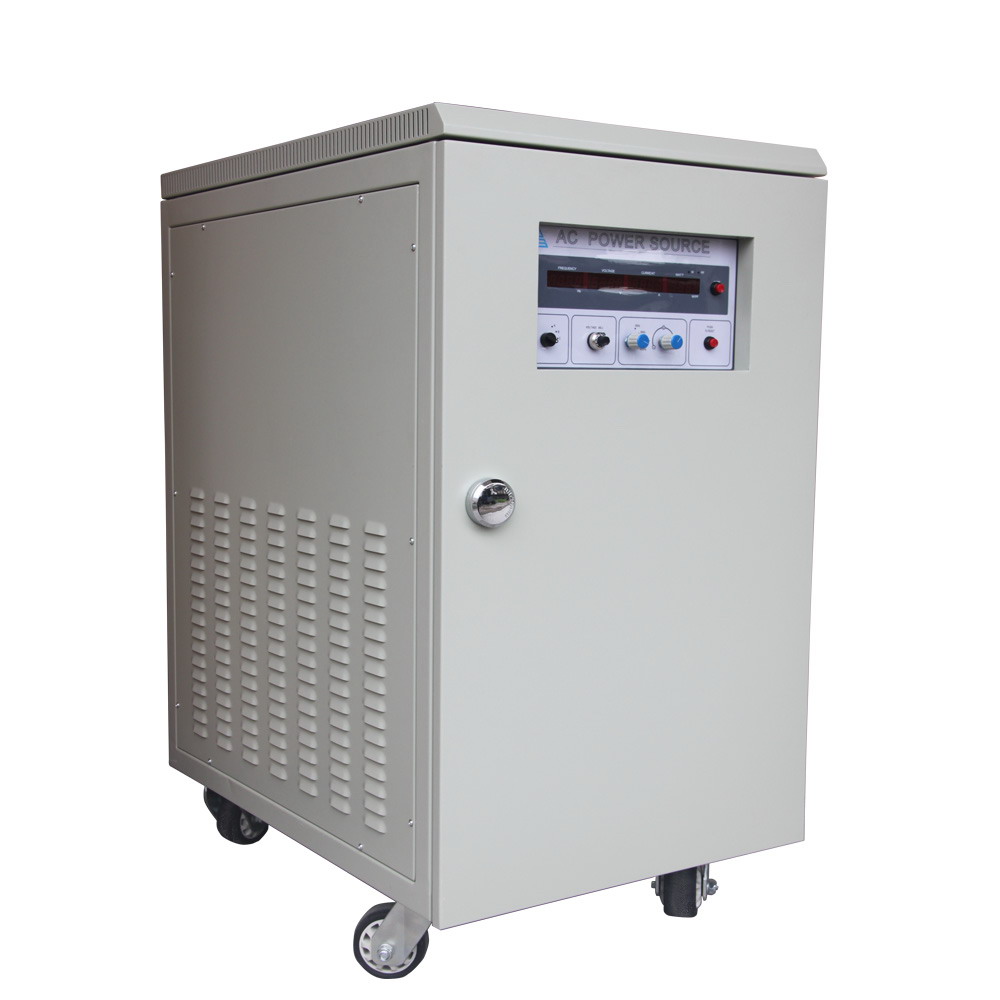
The Future of Variable Frequency Drives in the Era of Smart Grids
Click: 1789 Date: 09/14/2023 3::32::11 PM
The Future of Variable Frequency Drives in the Era of Smart GridsThe era of smart grids is upon us, and with it comes the need for more efficient and reliable power systems. Variable Frequency Drives (VFDs) play a crucial role in enabling the transition to smart grid systems by providing advanced control and optimization features. This article discusses the future of VFDs in the context of smart grids, exploring their potential applications, challenges, and opportunities for growth.Applications of VFDs in Smart GridsSmart grid systems aim to improve the efficiency, reliability, and sustainability of power distribution networks. VFDs can be integrated into various components of smart grid systems to optimize their performance and manage power flow more effectively .Frequency Stability and Control: VFDs can be used to maintain system frequency stability by reacting to changes in load and generation. They can help restore system frequency in the event of deviations, ensuring that the grid operates smoothly and efficiently.Distributed Generation: With the increasing penetration of renewable energy sources and distributed generation, VFDs can be used to manage and optimize the output of these generation units, ensuring that the grid remains stable and resilient .Energy Storage: VFDs can be integrated into energy storage systems, allowing for better control of energy storage and discharge processes, ultimately improving the overall performance of the smart grid.Smart Loads: VFDs can be used to manage the operation of smart loads, such as electric vehicles and industrial equipment, ensuring that they contribute optimally to the grid's stability and efficiency.Challenges and OpportunitiesThe integration of VFDs into smart grid systems presents both challenges and opportunities. Some of the key challenges include:Technological Transition: As VFDs become more prevalent in smart grid systems, there is a need for a technological transition, including the development of new communication and control technologies to support the advanced features of VFDs.Integration with Renewable Energy Sources: As renewable energy sources become more prevalent, VFDs need to be integrated seamlessly with these sources to ensure efficient and reliable operation of the grid.Grid Resilience: VFDs can help improve grid resilience by enabling better control of power flow and frequency stability, but they also need to be robust and reliable to ensure that they can respond effectively in the event of grid disturbances.In response to these challenges, there are several opportunities for growth and innovation in the VFD market:Advanced Control Algorithms: Developing advanced control algorithms that can optimize the performance of VFDs in various applications, such as frequency control, load management, and energy storage management, will be crucial for their widespread adoption in smart grid systems.
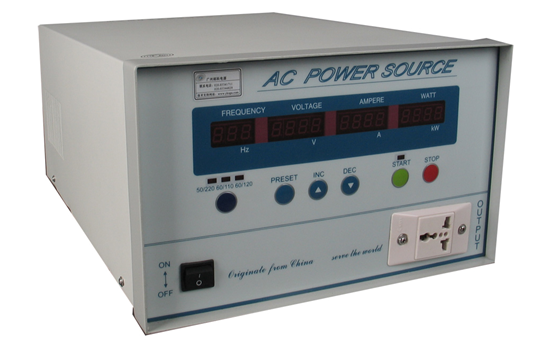
Frequency Inverters in Robotic Automation: A Game Changer
Click: 1834 Date: 09/14/2023 3::08::39 PM
Frequency Inverters in Robotic Automation: A Game ChangerRobotic automation has revolutionized various industries, and the integration of frequency inverters has played a pivotal role in enhancing the performance and capabilities of robotic systems. This article provides an overview of the significant impact of frequency inverters in robotic automation, highlighting their transformative role in improving efficiency, precision, and adaptability. By analyzing the existing literature, we explore the various applications of frequency inverters in robotic automation and discuss the potential research avenues and multidisciplinary collaborations in this field.1. IntroductionRobotic automation has witnessed significant advancements in recent years, enabling the automation of complex tasks and enhancing productivity in industries such as manufacturing, healthcare, agriculture, and logistics. One key component that has contributed to the success of robotic automation is the integration of frequency inverters. Frequency inverters, also known as variable frequency drives (VFDs), are electronic devices that control the speed and torque of electric motors by varying the frequency and voltage of the power supplied to the motor.The use of frequency inverters in robotic automation has been a game changer, enabling precise control of motor speed, acceleration, and deceleration. This level of control allows robots to perform tasks with high accuracy, efficiency, and adaptability. By adjusting the frequency and voltage, frequency inverters enable robots to operate at optimal speeds for different tasks, resulting in energy savings and improved performance.2. Implementation of Frequency Inverters in Robotic AutomationThe implementation of frequency inverters in robotic automation involves several key aspects that contribute to their effectiveness and transformative impact:Speed Control and Precision: Frequency inverters enable precise control of motor speed, allowing robots to perform tasks at varying speeds based on requirements. This level of control enhances the precision and accuracy of robotic movements, resulting in improved quality and efficiency.Energy Efficiency: Frequency inverters play a crucial role in optimizing energy consumption in robotic systems. By adjusting the frequency and voltage based on the task requirements, frequency inverters ensure that motors operate at optimal efficiency levels, reducing energy wastage and overall power consumption.Dynamic Response and Adaptability: Frequency inverters facilitate rapid changes in motor speed and torque, enabling robots to quickly adapt to changing task conditions and requirements. This dynamic response capability enhances the versatility and adaptability of robotic systems, allowing them to handle a wide range of tasks with efficiency and precision.Motor Protection and Safety: Frequency inverters include built-in protection mechanisms that safeguard motors from damage due to overvoltage, overcurrent, or overheating. These protective features ensure the longevity and reliability of robotic systems, minimizing downtime and maintenance costs.3. Applications of Frequency Inverters in Robotic AutomationThe integration of frequency inverters has found diverse applications in robotic automation across various industries. Some notable examples include:Manufacturing and Assembly: Frequency inverters enable precise control of robotic arm movements, allowing for efficient assembly line operations and high-quality product manufacturing.Material Handling and Logistics: Robotic systems equipped with frequency inverters can adapt their speed and torque based on the weight and type of materials being handled, facilitating efficient and safe material transportation and logistics operations.Healthcare and Medical Robotics: Frequency inverters play a crucial role in surgical robotics, enabling precise control of robotic movements during minimally invasive procedures. This precision enhances surgical outcomes and patient safety.Agriculture and Farming: Robotic automation in agriculture utilizes frequency inverters to control the speed and torque of robotic arms and vehicles, facilitating tasks such as planting, harvesting, and crop maintenance.Warehouse and Distribution: Frequency inverters enable efficient material sorting, stacking, and retrieval in warehouse and distribution centers, enhancing productivity and reducing labor requirements.4. Future Directions and CollaborationThe integration of frequency inverters in robotic automation has already demonstrated significant benefits and has opened up numerous research avenues and opportunities for collaboration. Some potential future directions include:Advanced Control Algorithms: Developing advanced control algorithms that optimize the performance and energy efficiency of robotic systems by leveraging the capabilities of frequency inverters.Human-Robot Collaboration: Exploring ways to enhance human-robot collaboration by utilizing frequency inverters to enable robots to adjust their movements and speed based on human input and interaction.Multi-Robot Systems: Investigating the use of frequency inverters in multi-robot systems to improve coordination, synchronization, and task allocation among robots.Safety and Fault Tolerance: Enhancing the safety and fault tolerance of robotic systems by integrating advanced fault detection and protection mechanisms into frequency inverters.In conclusion, the integration of frequency inverters in robotic automation has been a game changer, enabling precise control, energy efficiency, adaptability, and safety in robotic systems. The diverse applications of frequency inverters across industries highlight their transformative impact.
